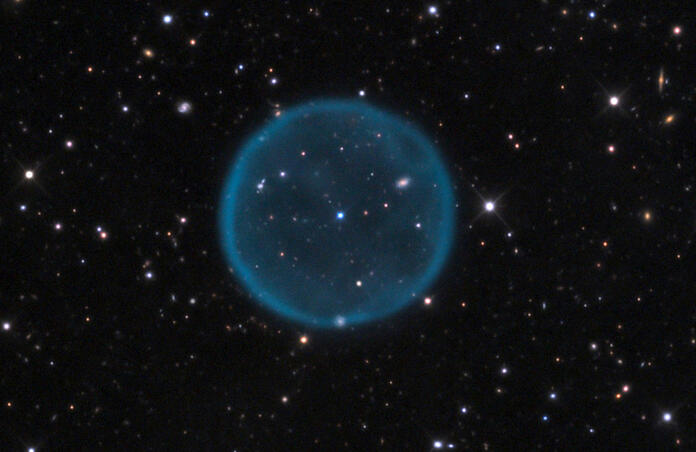The Abell Catalog of Planetary Nebulae

Planetary Nebulae.
While these are some of the most beautiful objects to observe, I’ve found them to consistently be the most difficult objects to not just observe but to image. Generally, they are quite small in the Field of View that govern the range of telescopes usually used by amateurs. To search and possibly find good planetary nebula targets for your setup means that you will at some point, need to review the Abell Catalog of Planetary Nebulae (like the first image posted here of Abell 39 done by Adam Block).
Dr George O. Abell was an American research astronomer who taught at the University of California, Los Angeles after earning his M.S. and Ph.D. from the California Institute of Technology. His work on the Palomar Observatory Sky Survey resulted in the development of not just his catalog of planetary nebulae that I mentioned but also his catalog of rich clusters of galaxies which I was not aware of until I started researching his biography and work.
The Abell Catalog of Planetary Nebulae was originally constructed of 86 entries that were thought to be planetary nebulae (about 4 of these objects were later found not to be planetary nebulae and removed from the catalog). Roughly half of these entries were discovered by Albert George Wilson, another American astronomer and the rest by Abell and 2 others; American astronomer Robert George Harrington and Rudolph Minkowski, a German American astronomer. As a side note, Minkowski created his own catalog of 200 suspected planetary nebulae and if you can link back to the August 2016 issue of Sky and Telescope, you will find an introduction article to the Minkowski catalog with solid advice on how to best observe these objects.
What I did not know but subsequently learned is that Dr Abell also published a catalog of huge clusters of galaxies. This catalog was part of Abell’s Ph.D. thesis using data from the Palomar Observatory Sky Survey. According to what I've found, there are close to 4,000 galaxy clusters in this catalog. There are specific requirements objects must have to be included such as a cluster’s Richness (number of galaxies it contained), Compactness, Distance defined as a nominal redshift and Galactic Latitude (specific distance away from our galactic plane). I’ve posted a couple of the clusters named in Abell’s catalog; these are images from the Very Large Telescope (VLT) of the Fornax Galaxy Cluster (Abell S0373) and the Hercules Galaxy Cluster (Abell 2151). These objects may be difficult to gather all their glory in a single image, but that shouldn’t stop you from making the attempt.
As always, stay safe, get more people to turn their lights off at night and clear skies!
This blog post was originally published in our Telescope Live Community.
The Community represents Telescope Live's virtual living room, where people exchange ideas and questions around astrophotography and astronomy.
Join the conversation now to find out more about astrophotography and to improve your observation and post-processing skills!
